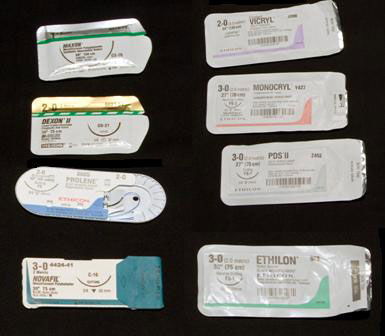Absorbable vs. nonabsorbable
Nonabsorbable suture materials
Definition: materials that maintain their tensile strength in tissue at least 60 days
- some lose strength over prolonged periods (eg. silk)
- others maintain original strength and are walled off by fibrous tissue
- can be permanently buried in tissues when necessary
- monofilament form preferred as associated with fewer infections
- avoid burying multifilament nonabsorbable sutures (associated with infection and draining tracts)
- should not be placed in
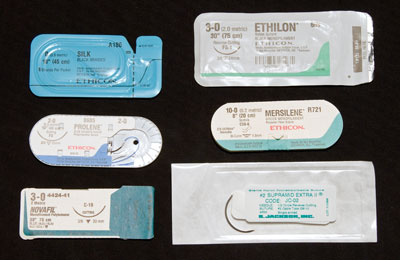
Absorbable suture materials
Definition: Materials that lose significant tensile strength within 60 days of being placed in tissue
-
- arbitrary 60-day time frame refers to loss of strength NOT disappearance from the tissue. Some absorbable materials are physically present a long time but have no appreciable strength.
- suture is broken down by phagocytosis or hydrolysis
- how rapidly a suture loses strength IS important trivia
- has to be compared with how long the incision needs to heal and regain its strength
- dehiscence results if use a suture that loses most of its strength before the tissues regain theirs.
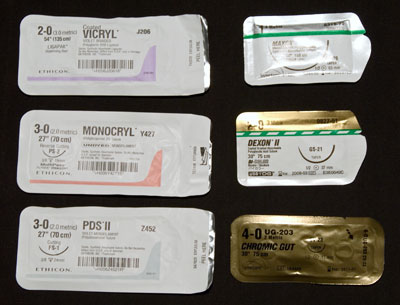
Monofilament vs. multifilament
Monofilament sutures
- consists of a single strand of material
- has minimal tissue drag
- decreased knot security because of smoothness so additional throws are needed to achieve secure knots
- significantly weakened by kinking or if crushed by instruments
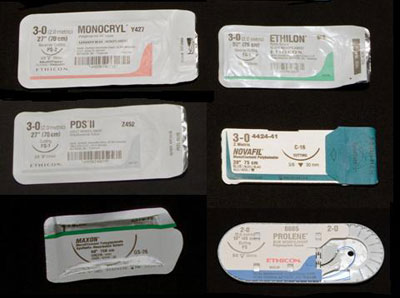
Multifilament (braided) sutures
- consists of several fibers twisted or braided into a single strand
- generally stronger
- usually better knot security
- more tissue drag
- many available with coatings applied by manufacturer to minimize tissue drag but also decreases knot security
- should NOT be placed in infected or contaminated areas
- bacteria can reside between individual fibers of the strand
- isolated from immune system and antibiotics
- results in persistence of infection as long as suture present
- can form nidus for calculi formation in bladder and biliary system if persist for significant duration
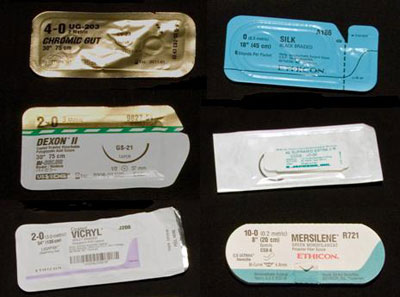
Natural vs. Synthetic
Natural suture materials
- made of natural fibers
- are absorbable or nonabsorbable types
- tend to induce more tissue reaction than synthetic materials
- common examples include surgical gut (catgut) and silk
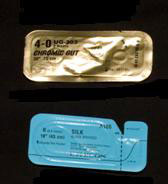
Synthetic suture materials
- made of man-made materials
- are absorbable or nonabsorbable types
- tend to be less reactive than natural materials
- tend to lose tensile strength and be absorbed at more predictable rates
- common examples include polydioxanone (PDS) and nylon
